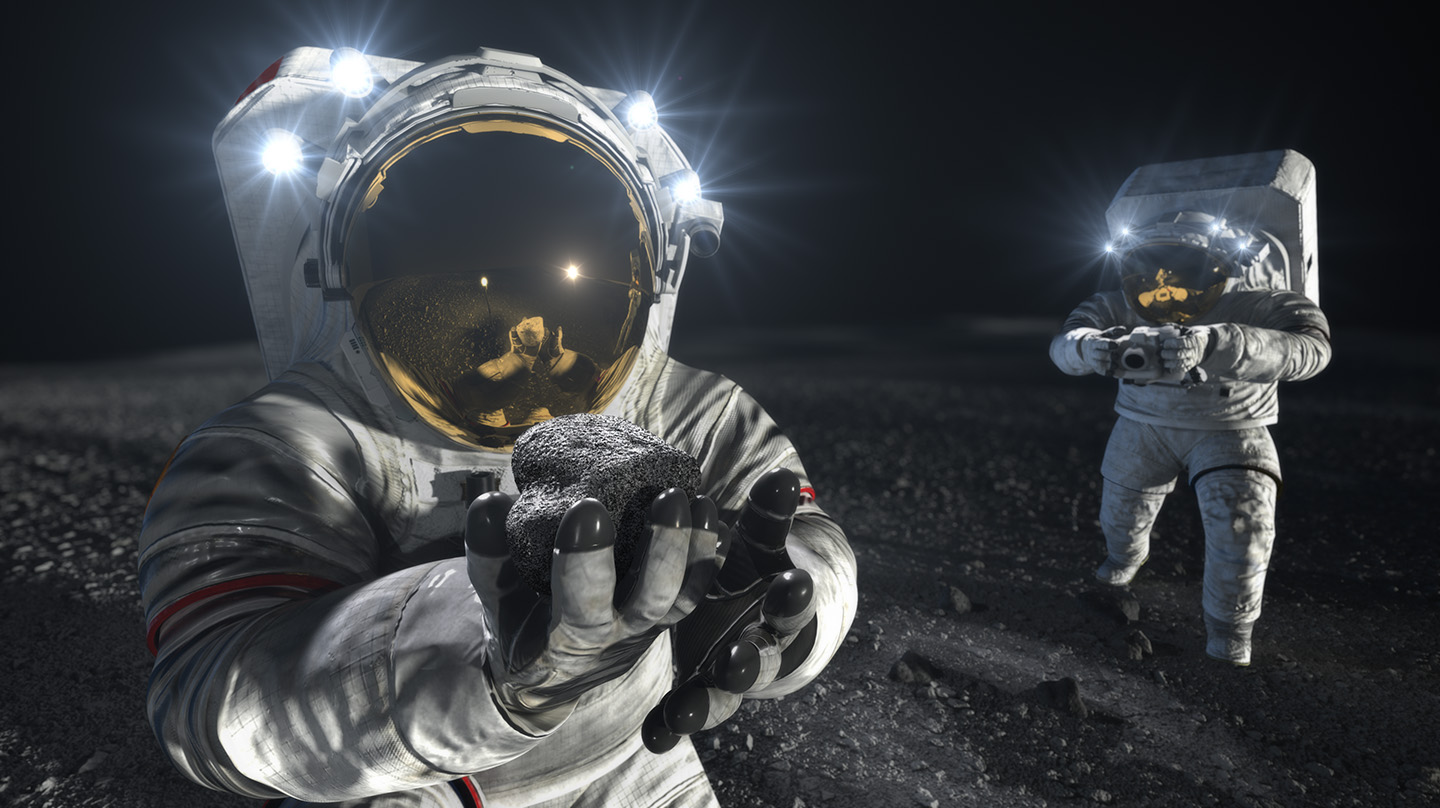Press Release
Johns Hopkins APL’s EAGLE Team Lands Lunar Science Assignment for NASA’s Artemis III Mission
NASA has selected a group of scientists from the Johns Hopkins Applied Physics Laboratory (APL) and several other institutions from the U.S., United Kingdom and Canada to provide their expertise in support of the first crewed landing of the agency’s Artemis program to explore the Moon.
APL planetary scientist Brett Denevi will lead this team, nicknamed EAGLE, for Earth-based Artemis III Geologists for Lunar Exploration. EAGLE will help define Artemis III scientific objectives, support the design and execution of the surface campaign to satisfy those objectives, and devise plans to evaluate the data returned by the mission — including preliminary examination of lunar samples the Artemis crew returns to Earth.
“We are so excited to be representing the lunar science community during this historic mission,” Denevi said. “Our team will focus on maximizing the science that will be accomplished by the Artemis III astronauts — ensuring that the samples and data from the mission enable transformative discoveries for decades to come.”
Of the many potential lines of inquiry for Artemis III to investigate, the EAGLE team will focus on four: determining the lunar record of inner solar system impact history; understanding the early evolution of the Moon as a model for rocky planet evolution; revealing the age, origin and evolution of volatile materials (such as water ice) in the solar system; and determining the variability of regolith (or surface dust) near the Moon’s poles to understand surface changes on other airless worlds and objects.
“All of these goals have the potential to transform our understanding of the Moon and the cislunar environment,” Denevi said.
Denevi lauded NASA’s approach to shaping the mission’s science support effort, particularly its emphasis on diversity and teamwork. The EAGLE team focused on inclusion to strengthen collaboration with stakeholders across the lunar science and engineering community, while seizing the opportunity afforded by exploration to dive deep into science that would benefit all of humankind.
Effective teaming will be critical to the team’s success, Denevi added, especially its support of real-time mission operations and collection and assessment of scientific samples and data.
“We’re honored and excited that NASA has entrusted APL with such an important exploration assignment,” said Jason Kalirai, APL’s mission area executive for Civil Space. “In particular, lunar exploration is a major national priority to which we are lending our expertise to solve a range of important science, technology and engineering challenges.”
For NASA, APL leads the Lunar Surface Innovation Consortium, an element of the agency’s Lunar Surface Innovation Initiative focused on exploring the key technological challenges of returning humans to the Moon, and connecting the government, industry and academic institutions with the talents and resources to overcome those challenges.
APL also has lead roles in several pathfinding missions to explore the lunar surface, including Lunar Vertex, a novel lander-rover mission under NASA’s Commercial Lunar Payload Services initiative to unravel the mysteries behind the Moon’s so-called magnetic swirls.
To learn more about APL’s space science and engineering missions and expertise, visit SPACE@APL.
